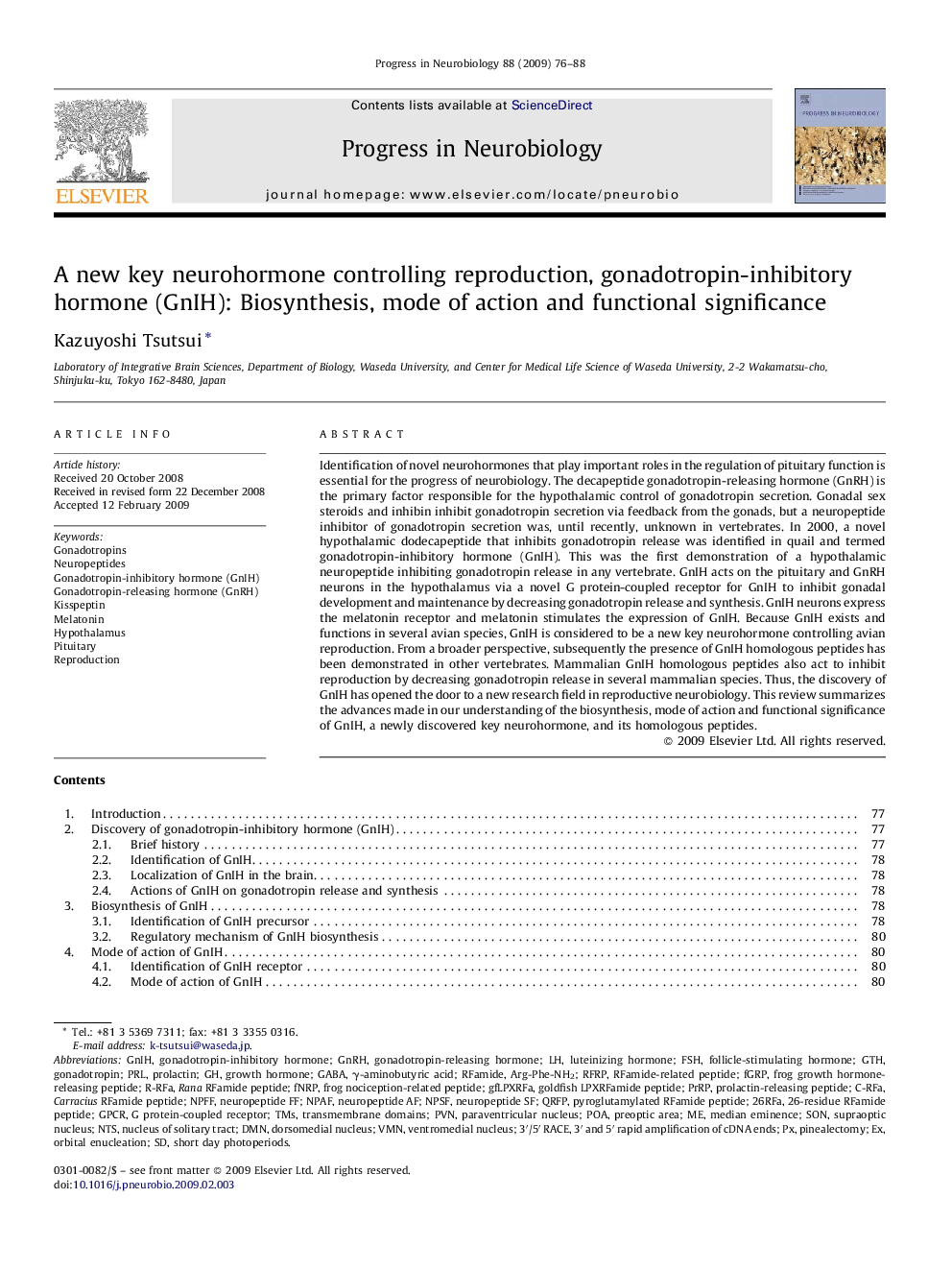| Article ID | Journal | Published Year | Pages | File Type |
|---|---|---|---|---|
| 4353747 | Progress in Neurobiology | 2009 | 13 Pages |
Abstract
Identification of novel neurohormones that play important roles in the regulation of pituitary function is essential for the progress of neurobiology. The decapeptide gonadotropin-releasing hormone (GnRH) is the primary factor responsible for the hypothalamic control of gonadotropin secretion. Gonadal sex steroids and inhibin inhibit gonadotropin secretion via feedback from the gonads, but a neuropeptide inhibitor of gonadotropin secretion was, until recently, unknown in vertebrates. In 2000, a novel hypothalamic dodecapeptide that inhibits gonadotropin release was identified in quail and termed gonadotropin-inhibitory hormone (GnIH). This was the first demonstration of a hypothalamic neuropeptide inhibiting gonadotropin release in any vertebrate. GnIH acts on the pituitary and GnRH neurons in the hypothalamus via a novel G protein-coupled receptor for GnIH to inhibit gonadal development and maintenance by decreasing gonadotropin release and synthesis. GnIH neurons express the melatonin receptor and melatonin stimulates the expression of GnIH. Because GnIH exists and functions in several avian species, GnIH is considered to be a new key neurohormone controlling avian reproduction. From a broader perspective, subsequently the presence of GnIH homologous peptides has been demonstrated in other vertebrates. Mammalian GnIH homologous peptides also act to inhibit reproduction by decreasing gonadotropin release in several mammalian species. Thus, the discovery of GnIH has opened the door to a new research field in reproductive neurobiology. This review summarizes the advances made in our understanding of the biosynthesis, mode of action and functional significance of GnIH, a newly discovered key neurohormone, and its homologous peptides.
Keywords
VMNRFRPRFamide-related peptideNPAFGTHRFamidePinealectomyNPFFNeuropeptide AF26RFaPrRPPRLQRFPNTSGPCRDMNPOAorbital enucleationGnIHGnRHTMSγ-aminobutyric acidReproductionTransmembrane domainsPituitarySONPVNmedian eminenceMelatoninPreoptic areaneuropeptide FFNeuropeptidesdorsomedial nucleusSupraoptic nucleusVentromedial nucleusNucleus of solitary tractparaventricular nucleusGonadotropin-releasing hormoneGonadotropin-releasing hormone (GnRH)follicle-stimulating hormoneluteinizing hormoneGrowth hormoneFSHGonadotropin-inhibitory hormoneGonadotropin-inhibitory hormone (GnIH)HypothalamusProlactinProlactin-releasing peptideKisspeptinGABAGonadotropingonadotropinsG protein-coupled receptor
Related Topics
Life Sciences
Neuroscience
Neuroscience (General)
Authors
Kazuyoshi Tsutsui,
